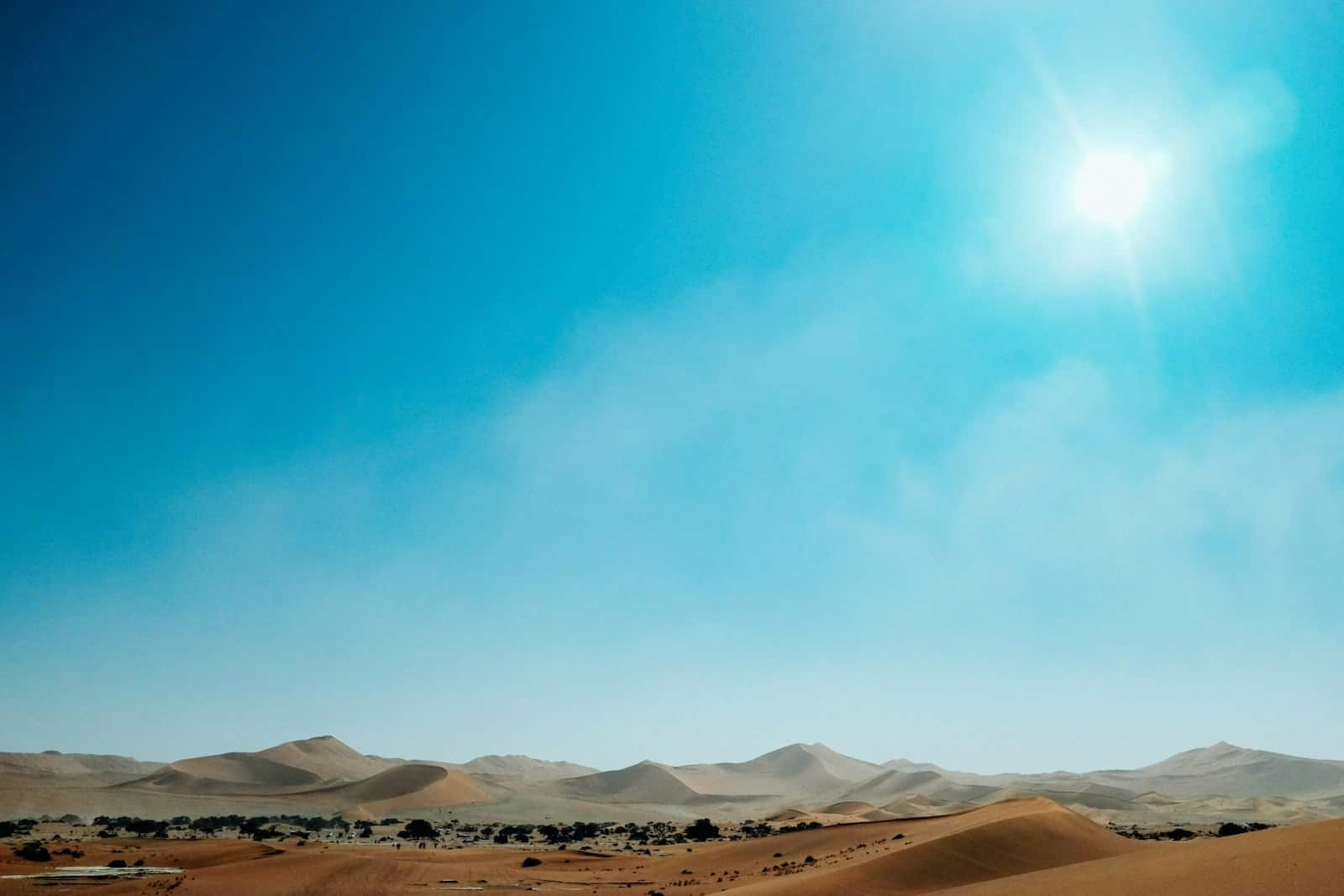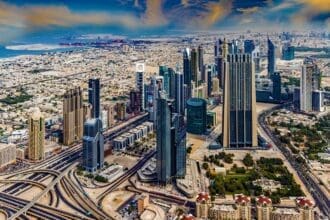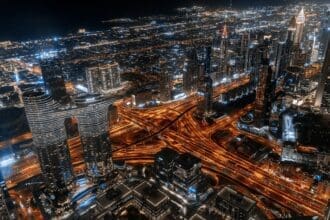Contents
Buying property in Dubai is synonymous with futuristic architecture, endless luxury and bold investment opportunities. But behind the glamorous facade lurk two growing risks that every investor needs to understand: extreme heat and rising sea levels. How do these weather factors threaten your investment and how can you protect yourself?
The reality of 50-degree heat
Living in Dubai means accepting extreme temperatures as part of everyday life. During the summer months, thermometers regularly exceed 45°C, and the ‘real temperature’ sensation, reporting humidity, often reaches over 50°C. This climatic fact has direct and indirect consequences for property owners.
1. Huge strain on infrastructure: the entire urban environment is designed around the need for constant cooling. Air conditioning systems run at full power 24/7, resulting in huge electricity consumption and strain on the grid. This is directly reflected in the utility bills (DEWA) and in maintenance charges (service charges), which include the cost of cooling the common areas.
2. Accelerated depreciation of buildings. Facades, window seals and exterior installations require more frequent and more expensive maintenance. For the investor, this means higher long-term costs that must be budgeted for.
3. Demand for green properties. Properties in buildings with “green” certifications (such as LEED or BREEAM) that guarantee better insulation, energy efficient windows and lower cooling costs are becoming more in demand. Investing in such a property can mean a higher initial cost, but also better liquidity and higher returns in the future.
The silent threat: sea level rise
Dubai owes much of its appeal to its coastline and iconic man-made islands such as The Palm Jumeirah, Bluewaters and The World Islands. However, it is these assets that are most vulnerable to sea level rise.
The scientific forecasts are clear: the Gulf is warming and the water level is rising. According to various models, sea levels could rise by between 0.5 and 1 metre by the end of the century. Even more conservative projections of a rise of 9 centimetres by 2030 pose a serious threat to low-lying coastal areas.
What does this mean for the owners of property owners in Dubai?
- Risk of flooding and erosion: luxury beachfront villas and low-rise apartments in waterfront buildings are at direct risk of flooding during stronger storms and higher tides. Unfortunate events such as the heavy rains in April 2024, which flooded entire neighborhoods, have shown how vulnerable infrastructure can be.
- Rising protection costs: maintaining beaches, breakwaters and coastal defences is an expensive undertaking. These costs are calculated in the maintenance fees paid by property owners in coastal complexes. As the sea rises, these costs will inevitably rise.
- The future of insurance: currently insurance companies still offer cover for these risks, but this could change. In the future, premiums for properties in the riskiest areas could jump dramatically or even go uninsured, making these properties unattractive and illiquid.
Dubai’s answer: investing in sustainability
Dubai’s leadership is aware of these risks. The city is investing billions in sustainable development through its 2040 Urban Master Plan. The plan envisages increasing green spaces, building sustainable and self-sufficient communities, and strict “green” building codes. Developers are increasingly integrating sustainable technologies into their new projects, and the government is investing in large-scale coastal enhancement projects.
For the investor, this means that the key to security lies in making the right choice. Rather than avoiding Dubai, the strategy should be focused on choosing quality, sustainable and well-protected properties. Checking the reputation of the developer, the availability of green certificates and careful analysis of the location and its security are more important than ever.
In conclusion, while the sun and sea are Dubai’s greatest assets, they are also its greatest long-term risks. The smart investor today looks beyond the glamour and considers climate reality as a major financial factor.
You might also like:
- Mortgage for Foreigners in Greece: The Complete Guide to Conditions, Rates, and Documents (2025)
- Dubai Golden Visa: How to Get UAE Residency Through Property (2025 Guide)
- Property yield: your compass in the world of real estate investment
This post is also available in: Български







